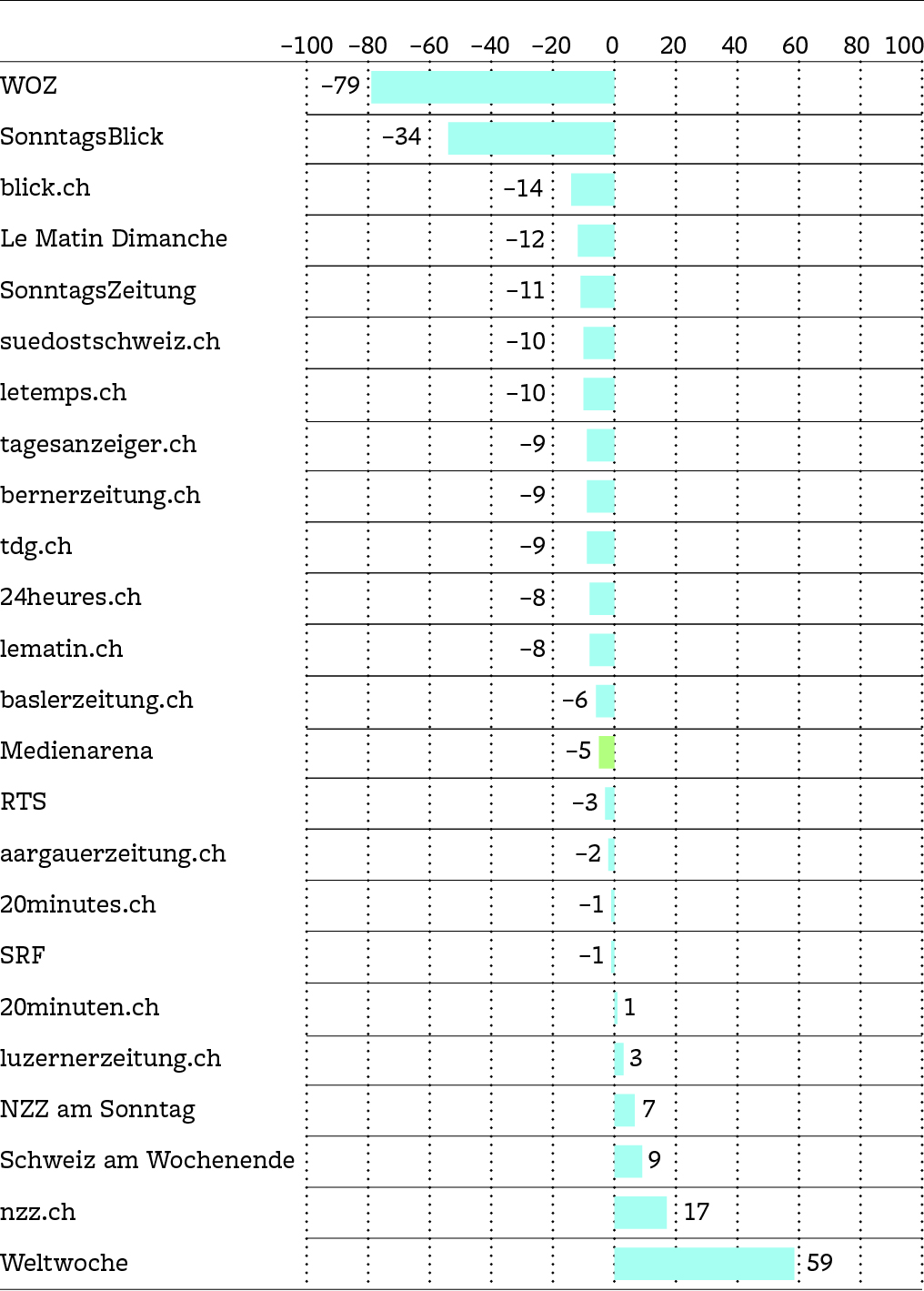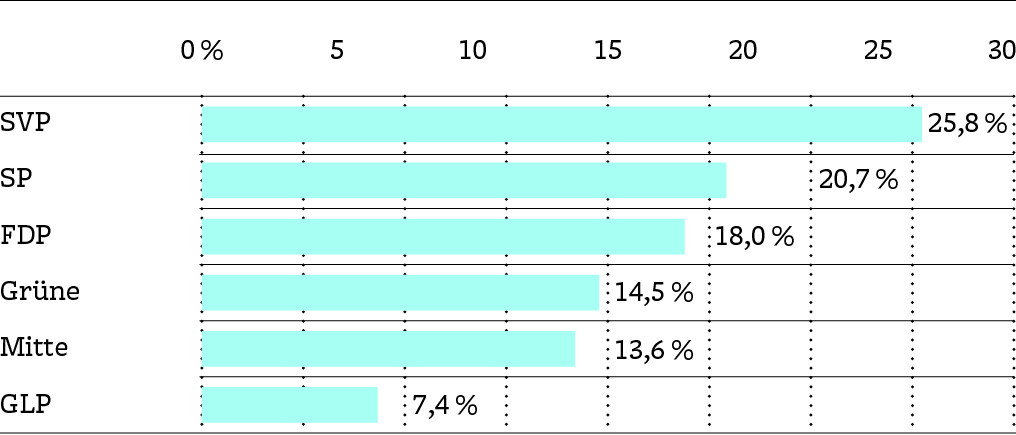News Coverage in Major Media Outlets Is Politically Balanced

In the weeks leading up to elections and referendums, the Swiss Federal Council and administration, political parties, associations and NGOs use targeted campaigns to try to sway public opinion. How politically balanced is news coverage in Swiss media on these campaigns? A new study by the Research Center for the Public Sphere and Society (fög) on the political positioning of news media during referendum campaigns has now found some answers. Their investigation was based on manual content analyses of news coverage of 44 referendums between 2018 and 2023. The researchers analyzed 23 media outlets from German-speaking and French-speaking Switzerland.
More support for proposals from the political majority and center-left
Overall, the media tend to report positively on government and parliamentary proposals, while popular initiatives are more likely to be criticized. Proposals supported by the center-left, such as the “marriage for all” or “nursing care” initiatives, are more likely to receive positive coverage than proposals from the center-right, such as the “terrorism act” or the “limitation initiative” (relating to immigration policy). This is particularly evident in editorials and commentary.
At the same time, the tone of news coverage is more reflective of the voting tendencies of the electorate than of the party representation and voting ratios in the National Council. However, in relation, the media give greater weight to voices critical of the majority. The media also generally pay more attention to popular initiatives than to proposals from the authorities. They thus manage, to a certain extent, to provide checks and balances for political affairs.
High-reach media politically neutral

These patterns were observed in most of the media studied. In most of the examined media outlets, news items on proposals by the authorities reflecting the political majority have a slightly positive to positive tone, especially on the suedostschweiz.ch website (+46). The predominant tone is critical of governmental and parliamentary proposals in only three papers: SonntagsZeitung (-4), WOZ (-10) and Weltwoche (especially pronounced with -32). News items on popular initiatives tend to be negative, especially at nzz.ch (-30), Schweiz am Wochenende (-31) and Weltwoche (-41). Only SonntagsZeitung (+9), SonntagsBlick (+20) and WOZ (+44) are more likely to praise than criticize popular initiatives.
On a scale of left-wing to right-wing from -100 to +100, some left-wing tendencies can be seen for example at Le Matin Dimanche (-12), blick.ch (-14) and SonntagsBlick (-34). A slight right-wing tendency is seen at NZZ am Sonntag (+7) and Schweiz am Wochenende (+9), while nzz.ch is a little further to the right (+17). Clear exceptions are the media outlets that occupy a distinct political position, with WOZ on the left (-79) and Weltwoche on the right (+59). High-reach media such as 20minuten.ch (+1), 20minutes.ch (-1), SRF (-1) and RTS (-3) are politically neutral according to the above scale.
Political parties receive the most attention

A broad spectrum of voices are visible in news coverage of the referendum proposals. The most attention is given to the various parties (39%), in proportion to their voter shares: of the six largest Swiss parties, the SVP get the most attention with 26% and the Green Liberal Party the least, with 7%. 12% of news coverage is given over to the executive powers, and 14% to NGOs and individual citizens. Slightly less present in the coverage are science and academia (11%), and the economy (8%). Other interest groups such as religious organizations or associations receive 15% of the media attention.
Swiss media balanced overall
“Our study shows that most media position themselves neither on the left nor right of the political spectrum, but relatively close to the center. This is true in particular for the high-reach public media SRF and RTS as well as the commuter papers 20 Minuten/20 Minutes, which present themselves as impartial reporters,” says Linards Udris, author of the study and deputy head of research at the fög.
Nevertheless, the fög did identify some deficits. Not all proposals receive the same level of media attention. The sometimes considerable differences mean that voters are not informed to the same extent about all proposals.
The entire study is available for download here.